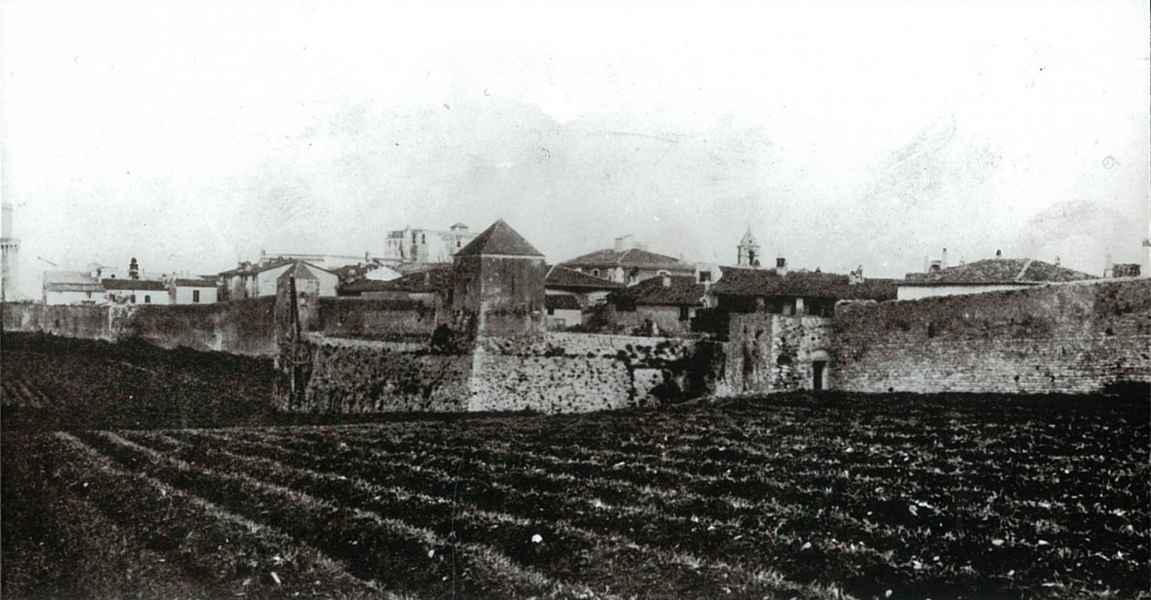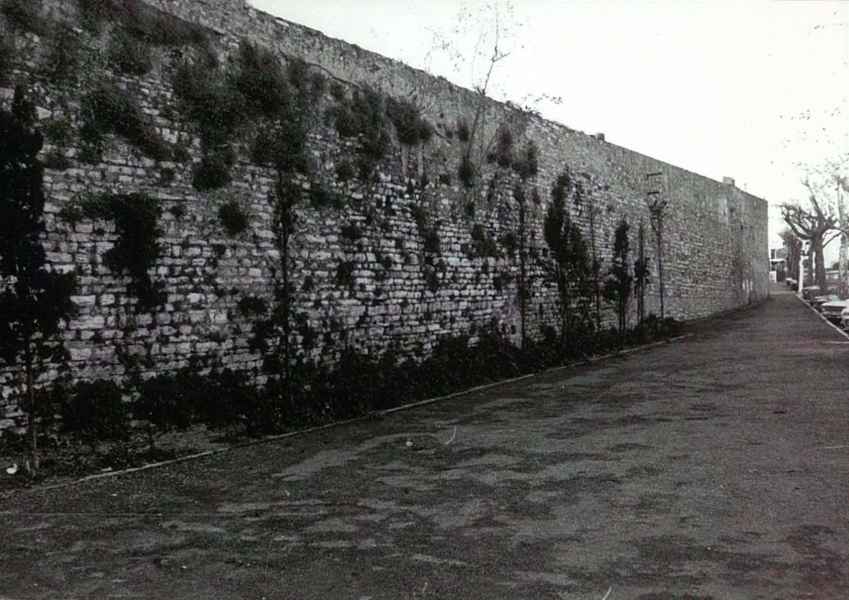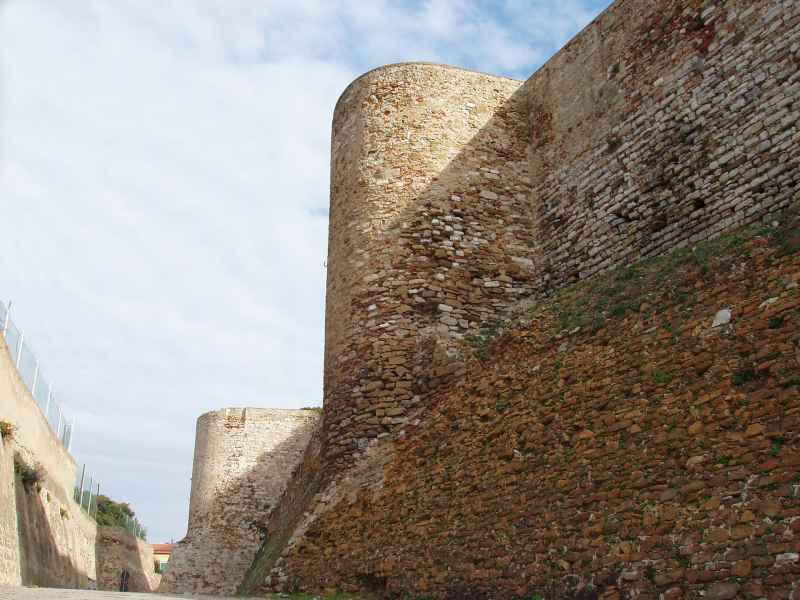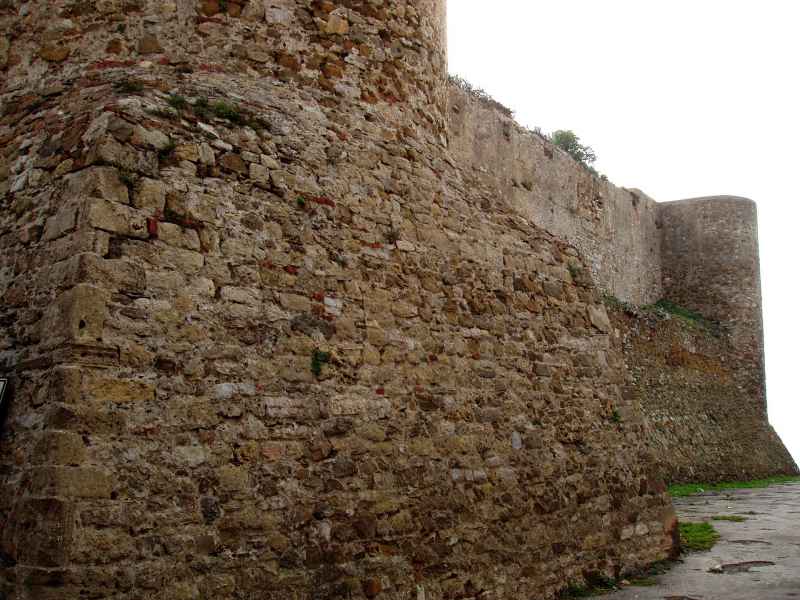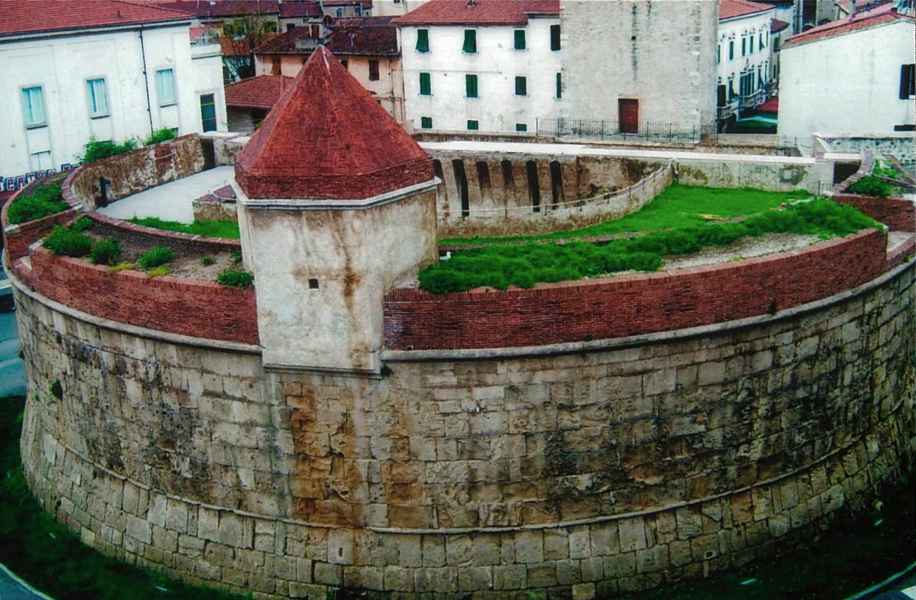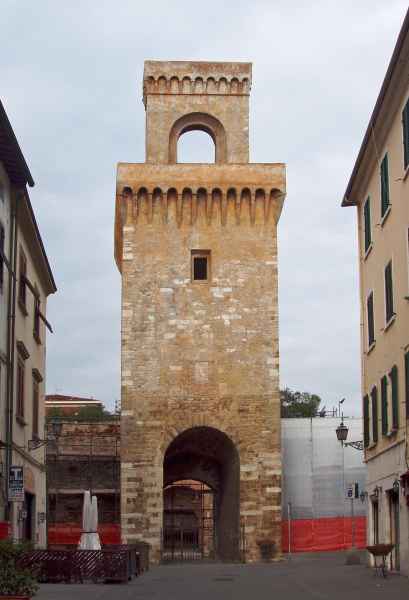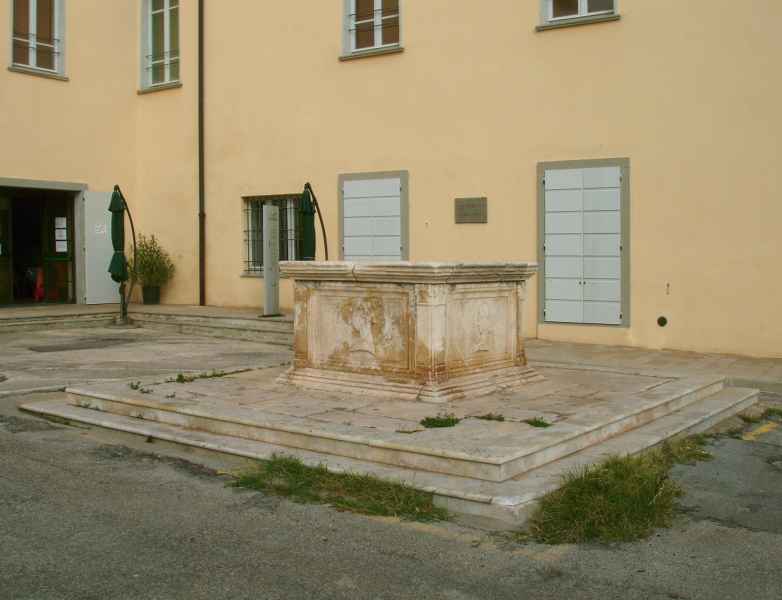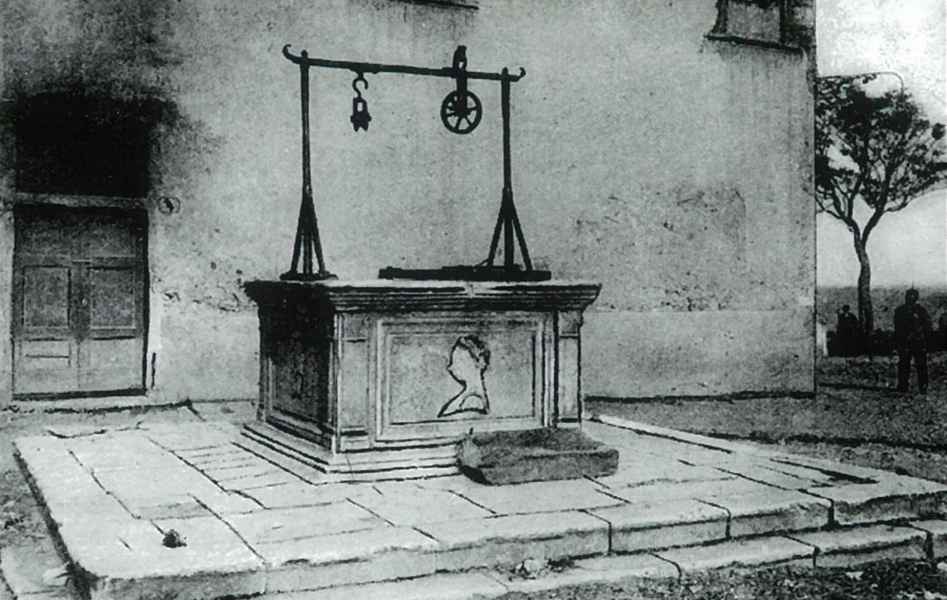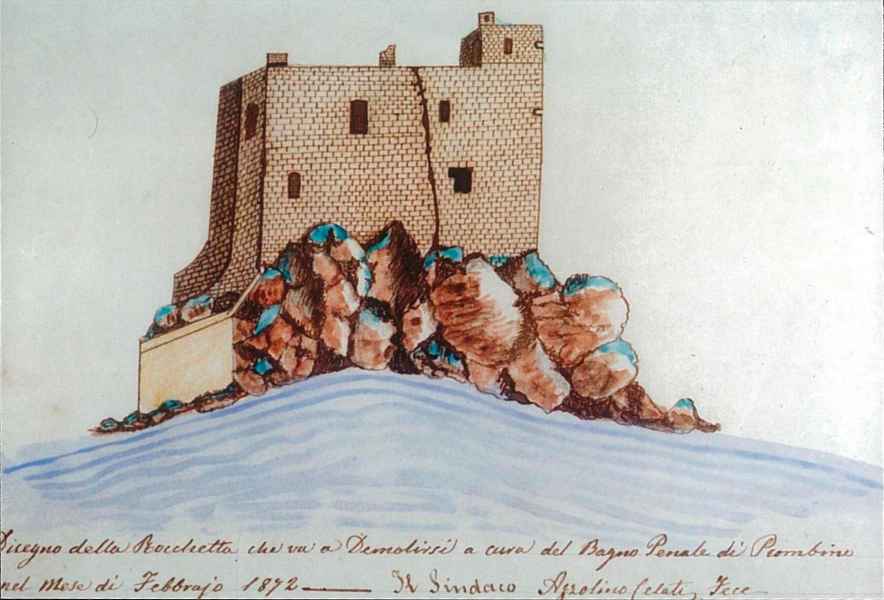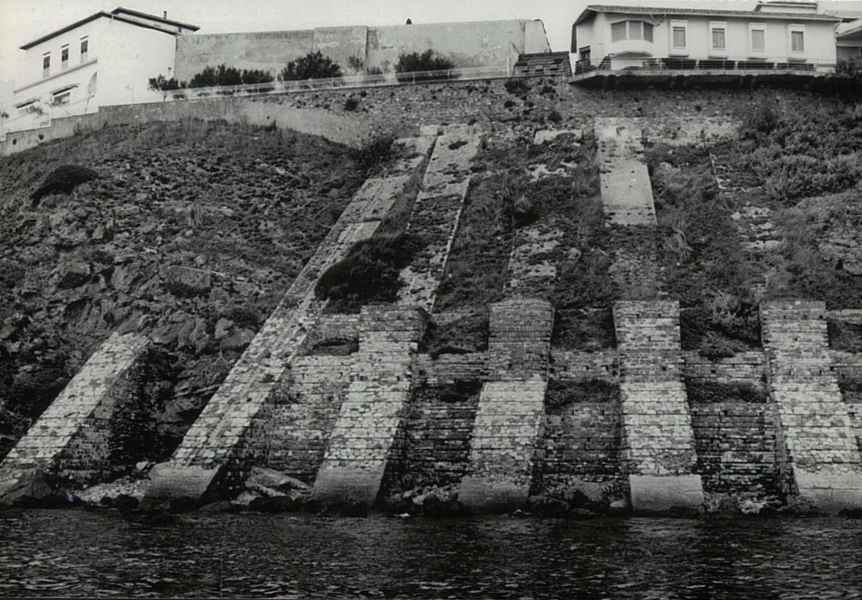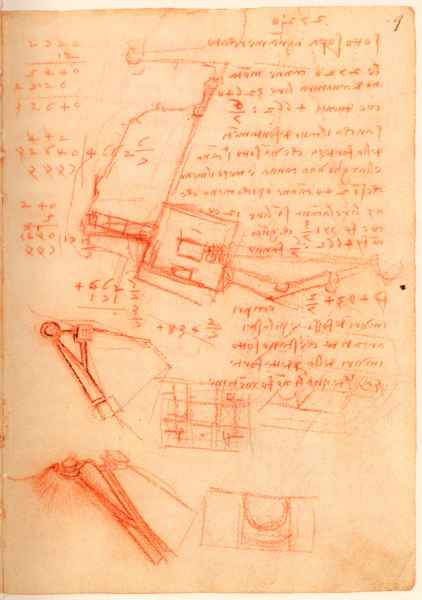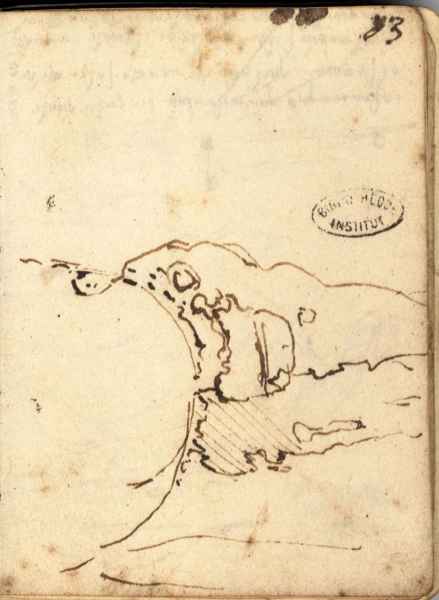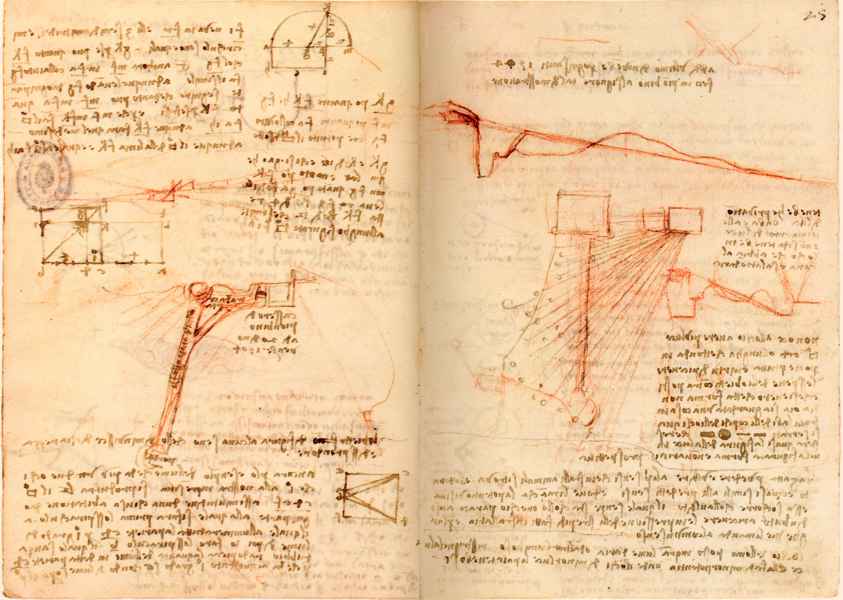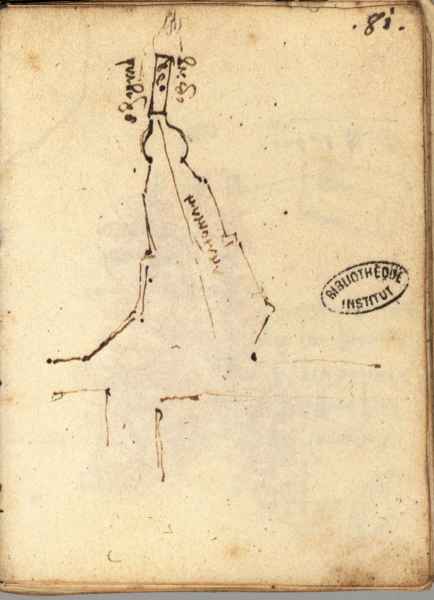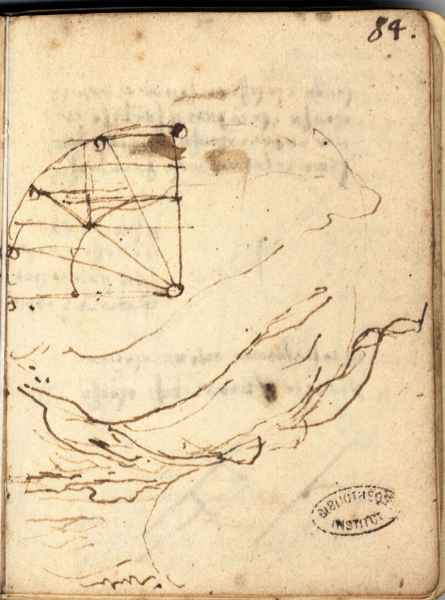The Rivellino della Porta a Terra, the Castello and some sections of the wall near the Citadella constitute the sole surviving testimony of the centuries-old history of the fortifications of Piombino, which are of considerable importance from a military engineering perspective and because of their associations with Leonardo.
The encircling wall, which was almost two metres wide at its base and crenellated with Guelph merlons, had four fortified corners, one at each of the four points of the compass: to the north the Torrione-Rivellino, Porta a Terra; to the south the Rocchetta; to the east the castle and the Medici Fort which housed the military garrison; and to the west the citadel which was the residence of the ruling Signori and Princes.
The Pisan Cassero or bridgehouse (now englobed by the castle of the Medici Fortress), the Torrione della Porta a Terra and the Rocchetta all date to the 13th century. The Rocchetta was a long and narrow fortified position perched on a rock spur facing the island of Elba; a lighthouse now stands on this site.
The monumental tower at Porta a Terra took more than two centuries to build. The Torrione (also known as the Tower of Saint Anthony) was the first bulwark of the town’s defences to be erected. It is the only surviving construction from the town’s brief period of independence (12th – 13th centuries). On its right corner facing the town an epigraph is still legible; a second (partially damaged) epigraph is affixed to the opposite corner, inside the archway. The arch, which is connected to the top of the tower by a terrace, was built after 1848. On the entrance to the arch facing the town, the coat of arms of the Appiani, dated 1475, is fixed to the wall. This date provides an indication of when the original defensive wall encircling the town was constructed.
In 1447, at the behest of Rinald Orsini, the Rivellino was built in front of the Porta a Terra. This imposing fortification was designed in the form of a Euclidean semicircle. It had only one gate, which was protected by a moat and a drawbridge. It flanked and was designed to defend the eastern and western sections of the earthworks. These defensive walls were lined on the exterior with tuff, a local volcanic stone. To keep up with changes in the techniques of war, in the 16th century some parts of the Rivellino were renovated. The most significant modification is documented in a letter from the governor of the town to Cosimo I de’ Medici dated 6 August 1543, where he notes that the height of the Rivellino has been raised and a terreplain added. Its interior would have been divided into floors by a wooden structure and there was a well (now covered over with earth), which allows us to hypothesize that there was a large basin for the cooling of cannonballs.
During the second half of the 15th century the Citadella was constructed on Mount Santa Maria to provide a fortified residence for the Signore of Piombino. At the beginning of the 16th century the defensive wall was configured in the shape of an elongated lozenge and must have been quite imposing.
Piombino and its fortifications were studied by Leonardo, who spent a period in the town around 1502 in the service of Cesare Borgia as an expert in military engineering, and then in 1504, following the mission of Niccolò Machiavelli at the head of a delegation sent by Cosimo I de’ Medici.
During his first sojourn Leonardo worked on the reclamation of the nearby marshland and on the layout of the streets in the town centre, as evidenced by drawings in Ms. L. There is a drawing of the fortifications of Piombino in the Codex Atlanticus, with a ground plan of the city walls and his ideas for the fortification of the area towards the inland (although some scholars have attributed this project to Antonio da Sangallo the Elder).
During his second sojourn Leonardo concentrated his attention on the town’s defenses, studying their separate parts as well as their overall configuration. His analyses led to proposals that can be found in the Codex Madrid II and involve the construction of new moats outside the walls, the erecting of an external tower to defend the castle, and the building of a new port to replace the modest Porticciolo.
Leonardo also proposed that two cylindrical defensive towers be built, one to the east in front of the Cassero and one to the west in front of the Citadella, which would give the Signoria’s soldiers an unhampered view, allowing them to fire in two directions at once and thus defend that entire side of the town. Of the two towers, work on at least one – the tower by the Bridgehouse – was begun. Testimony of this may be found in The Retreat of the Turks from Piombino, a fresco in the Sala di Cosimo I of the Palazzo Vecchio (Florence) painted by Giovanni Stradano around 1565, and in drawings made for the Comune di Piombino in 1883 prior to the dismantling of the wall between the castle and the Rivellino as part of its plans to create an open space for outdoor markets and other activities.
Finally, Leonardo turned his attention to improving the defences of the citadel on Mount Santa Maria. Here he recommended that a section of wall be added, part of which still stands today.

Walls of Piombino
Texts by
Mauro Carrara with contributions by Graziano Magrini / English translation by Lisa Chien
Gallery
Gallery





